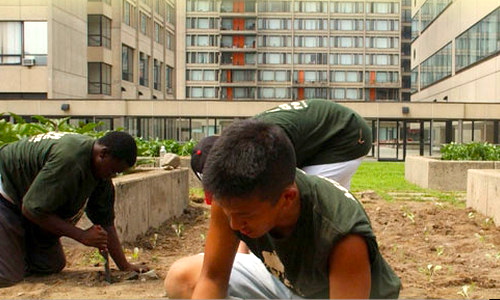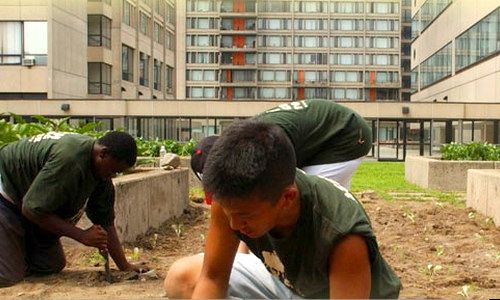

Urban agriculture and the local food movement are flourishing as farms and gardens continue to pop up across Boston’s inner-city sprawl.
To highlight the green movement, Food Tank created a top ten list of the city’s most innovative urban agriculture projects.
1. Berkeley Community Garden, a community of 140 farmers in Boston’s South End, grows a variety of fruits, vegetables and herbs, including bitter melon, cilantro, chinese long beans and broccoli. The garden also provides helpful tips and resources to gardeners, and is one of the only city gardens open to the public.
2. Bloombrick Urban Agriculture—an indoor farm located in the heart of Cambridge—grows and sells still-living microgreen, wheatgrass and other select produce in hydroponic and soil systems. Bloombrick aims to help cities become completely sustainable, 100 percent local and effectively regenerative, starting with Boston.
3. City Growers, with the assistance of community partners, helps to reclaim and secure discarded parcels of land throughout the city for growing food. By transforming these abandoned lots into “intensive urban farms that are economically and environmentally sustainable,” City Growers can offer its members livable wages by increasing local agricultural production and opening up local access to inexpensive and nutritious foods.
4. CitySprouts offers a school gardening program that has been bolted onto the Boston Public School district’s curricula. CitySprouts services include: Classroom to Garden, which supports educators as they expand their lessons into the school gardens; Food Education through food-producing school gardens; and CitySprouts Summer Intern Program, which helps youth build connections with their local food system and the surrounding natural environment.
5. The Food Project leverages sustainable agriculture to create social and personal change among Massachusetts youth. Since 1991, the Food Project has provided kids and teens with food system and food justice experience. They have farms across the state, including several urban farms in Boston. The food produced on Boston’s farms helps fund the Dudley Town Common farmers’ market and numerous local hunger relief organizations.
6. Green City Growers transforms vacant space into urban farms. They help people of various skill levels with gardens by converting yards, rooftops, and vacant lots into prosperous, organic vegetable gardens and farms.
7. Higher Ground Farm is Boston’s first rooftop farm, located on a 55,000-square-foot space atop the Boston Design Center. Higher Ground Farm grows and sells greens, tomatoes and herbs to local restaurants. Starting in 2014, the farm will be offering community supported agriculture shares and selling its produce at local farmers markets.
8. ReVision Urban Farm, a community-based agriculture project, uses its fields to feed homeless individuals and families who are a part of Victory Programs. The produce is free for those in need and made affordable for other community members. Additionally, ReVision Urban Farm also offers information about sustainable farming, and provides job training for the youth and homeless in the community.
9. The Urban Farming Institute of Boston’s mission is “to contribute to healthy people and sustainable cities by promoting and creating self-sustaining urban farming enterprises and farming jobs.” The institute does so by creating farms, providing farmer training, promoting public education and policy change and bringing people in urban neighborhoods closer to food production.
10. Urban Hydr-“O”-Farmers is comprised of high school students enrolled in the Hydroponics track of Boston College’s College Bound Program. They grow food hydroponically in a small greenhouse on Boston College’s campus, enabling them to grow year-round, and sell the produce at farmer’s markets in Boston.
Visit EcoWatch’s FOOD and HEALTH pages for more related news on this topic.


 233k
233k  41k
41k  Subscribe
Subscribe 
